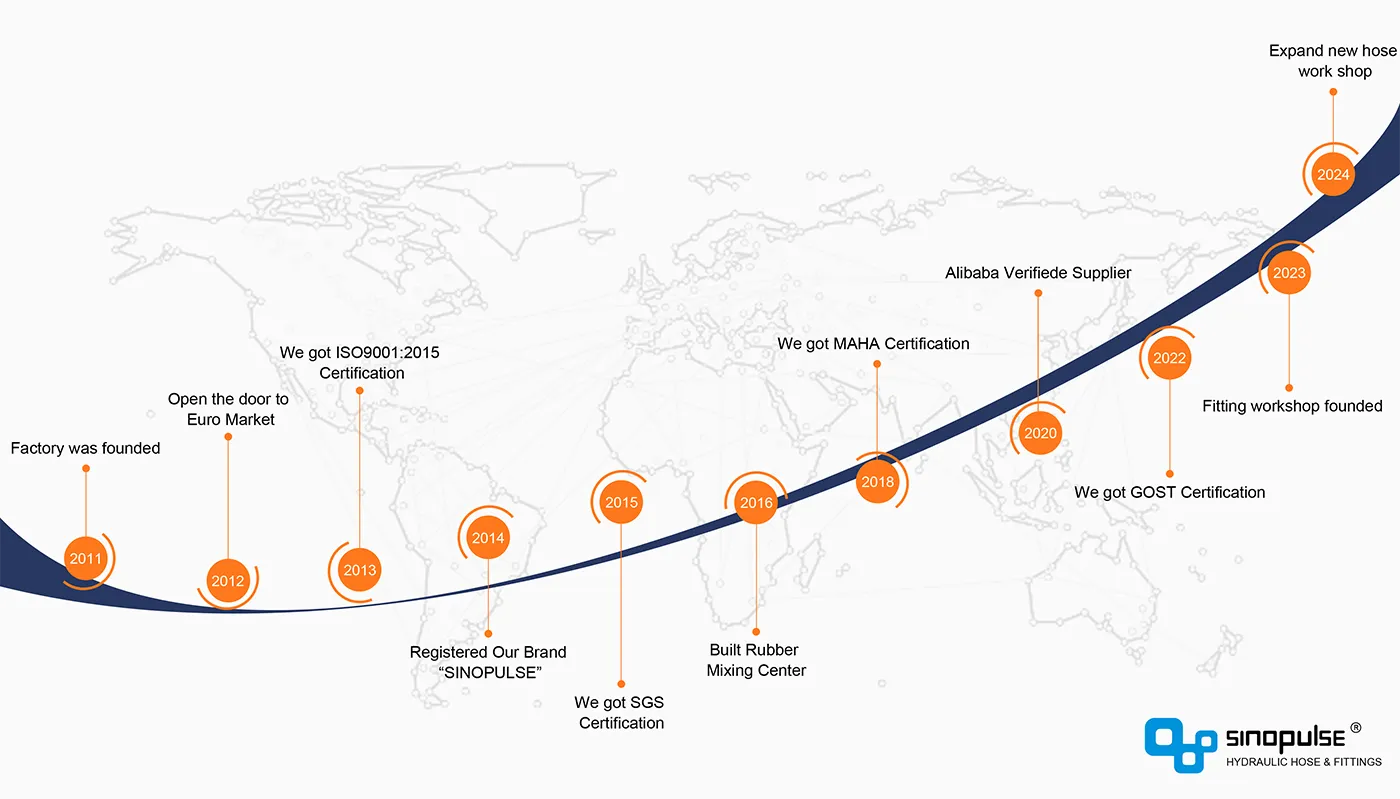Hand crimpers are particularly valued for their portability and ease of use. Unlike larger hydraulic crimping machines, hand crimpers can be operated manually, making them ideal for on-site repairs and installations. This mobility allows technicians to efficiently handle maintenance tasks in various environments, such as construction sites, automotive workshops, and agricultural fields.
Since hose may change in length from +2% to -4% under the surge of high pressure, provide sufficient slack for expansion and contraction.
Never use a bending radius less than the minimum shown in the hose specification tables. The bending radius of the hose should be far away from the hose fitting (A>1.5R)
Hose bending radius is bigger when it is in motion.
Choose proper fittings, avoid twisting in hose lines bent in two planes.
Avoid twisting in hose by use clamp properly.
Hose should not be twisted, hose is weak when installed in twisted position. Also pressure in twisted hose tends to loosen fitting connections. Design so that machine motion produces bending rather that twisting.
Leave proper length when the hose in connected
Choose proper fittings, avoid too small bending radius and excess force.
Choose proper fittings, avoid excessive hose length.
Reuse friction, avoid hose touching the object directly or far away from the object.
Hose Active Working Pressure Working Life
As shown , when active working pressure in 1.25 times recommended working pressure, the hose working life is only half of i under working in recommended working pressure.
Store Conditions of the Assembly.
1.If possible, the storing temperature range is within 0-30 ℃. During storing, temperature should not exceed 50℃
2.The storing areas can not place equipment within can produce ozone.For example mercury vapour lamp, high voltage electric device and other equipment which can produce spark or set out electricity.
3.Can not be placed with erosive products or exposed over gas-volatile on these products.
4.Far away from heat source and equipment which can produce electric field or magnetic field
5.Avoid sunshine or strong artificial light source
6.Avoid to touch the sharp objects or the ground
7.Guarantee against rodent attacking.
8.Observe the rule of “First in, then first out”
In the world of industrial operations, high-pressure hoses play a critical role. They are essential for the safe and efficient transfer of fluids in various applications, ranging from construction to agricultural and equipment maintenance. This article will explore the significance of high-pressure hoses, particularly those rated for 1% and 4% operational pressure, their construction, and their applications.
In the world of industrial operations, the use of hydraulic hoses is crucial for the efficient and safe functioning of machinery. These hoses are responsible for transmitting hydraulic power within a hydraulic system, making them an integral component in various industries such as construction, manufacturing, agriculture, and more. As such, the quality and reliability of hydraulic hoses play a significant role in ensuring the smooth operation of equipment and machinery.
Die Konstruktion von industriellen Schläuchen umfasst oft mehrere Schichten, um zusätzliche Sicherheit und Flexibilität zu gewährleisten. Diese Schichten können verstärkt werden, um die Druck- und Temperaturfestigkeit zu erhöhen. Hochdruckschläuche sind speziell für Anwendungen entwickelt, bei denen hohe Druckverhältnisse herrschen, und sie werden häufig in Maschinen und Anlagen verwendet, die hohe Anforderungen an die Sicherheit stellen.
High-pressure hoses, specifically those rated at 1% and 4%, are essential components in various industrial applications. Understanding their construction, material properties, and pressure ratings is vital to ensuring safety and performance in their designated uses. As industries continue to evolve, the demand for reliable and durable high-pressure hoses will only grow, underscoring their importance in modern operations.
Given their critical function, it is imperative that these hoses are durable, reliable, and capable of withstanding high pressures. Any failure in a hydraulic hose can lead to brake failure, posing a significant safety hazard. Therefore, understanding the quality and specifications of these components is essential for vehicle owners and mechanics alike.

